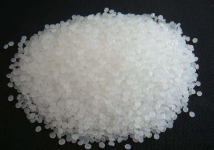read: 614 time:2025-06-25 11:36:16 from:化易天下
Phenol, a fundamental aromatic compound, is known for its distinctive chemical behavior, particularly its tendency to undergo electrophilic substitution reactions. Understanding why phenol undergoes electrophilic substitution reaction involves delving into the unique structure of phenol and the electronic effects that influence its reactivity. This article will explore the key reasons behind this phenomenon, focusing on the molecular structure, the influence of the hydroxyl group, and the nature of electrophilic substitution in aromatic compounds.
To comprehend why phenol undergoes electrophilic substitution reaction, it's essential to first understand its molecular structure. Phenol consists of a benzene ring bonded to a hydroxyl group (-OH). The benzene ring is an aromatic structure characterized by delocalized π-electrons, making it highly stable. However, the presence of the hydroxyl group significantly alters the electron density within the ring.
The hydroxyl group in phenol is highly influential in determining its chemical behavior. It acts as an electron-donating group through its lone pair of electrons on the oxygen atom, which interacts with the π-electrons in the benzene ring. This interaction increases the electron density, particularly at the ortho and para positions relative to the hydroxyl group. This increased electron density makes these positions more reactive towards electrophiles, which is a critical factor in understanding why phenol undergoes electrophilic substitution reaction.
Electrophilic substitution reactions involve an electrophile attacking an electron-rich area in an aromatic compound. In the case of phenol, the electron-donating effect of the hydroxyl group enhances the nucleophilicity of the benzene ring, making it more attractive to electrophiles. This is why phenol readily undergoes electrophilic substitution, as the ring is activated and more susceptible to attack by electrophiles.
The mechanism of electrophilic substitution in phenol typically follows three main steps:
This mechanism highlights why phenol undergoes electrophilic substitution reaction, as the activated benzene ring facilitates the formation and stabilization of intermediates during the reaction process.
In summary, the reason why phenol undergoes electrophilic substitution reaction lies in its molecular structure, particularly the electron-donating nature of the hydroxyl group. This group enhances the electron density of the benzene ring, making it more reactive towards electrophiles. Understanding this concept is crucial for chemists and industry professionals working with aromatic compounds, as it explains the fundamental reactivity of phenol and its derivatives in various chemical processes.
By recognizing the factors that influence phenol's reactivity, one can better predict and manipulate the outcomes of reactions involving this versatile compound, optimizing processes in chemical synthesis and industrial applications.

Jincheng Petrochemical's 300000 ton polypropylene plant successfully trial production, 2024 polypropylene market analysis

The ABS market remains sluggish, what is the future direction?

Market differentiation of bisphenol A intensifies: prices rise in East China, while prices generally decline in other regions

The production method and process flow of silicone acrylic lotion, and what are the common raw materials